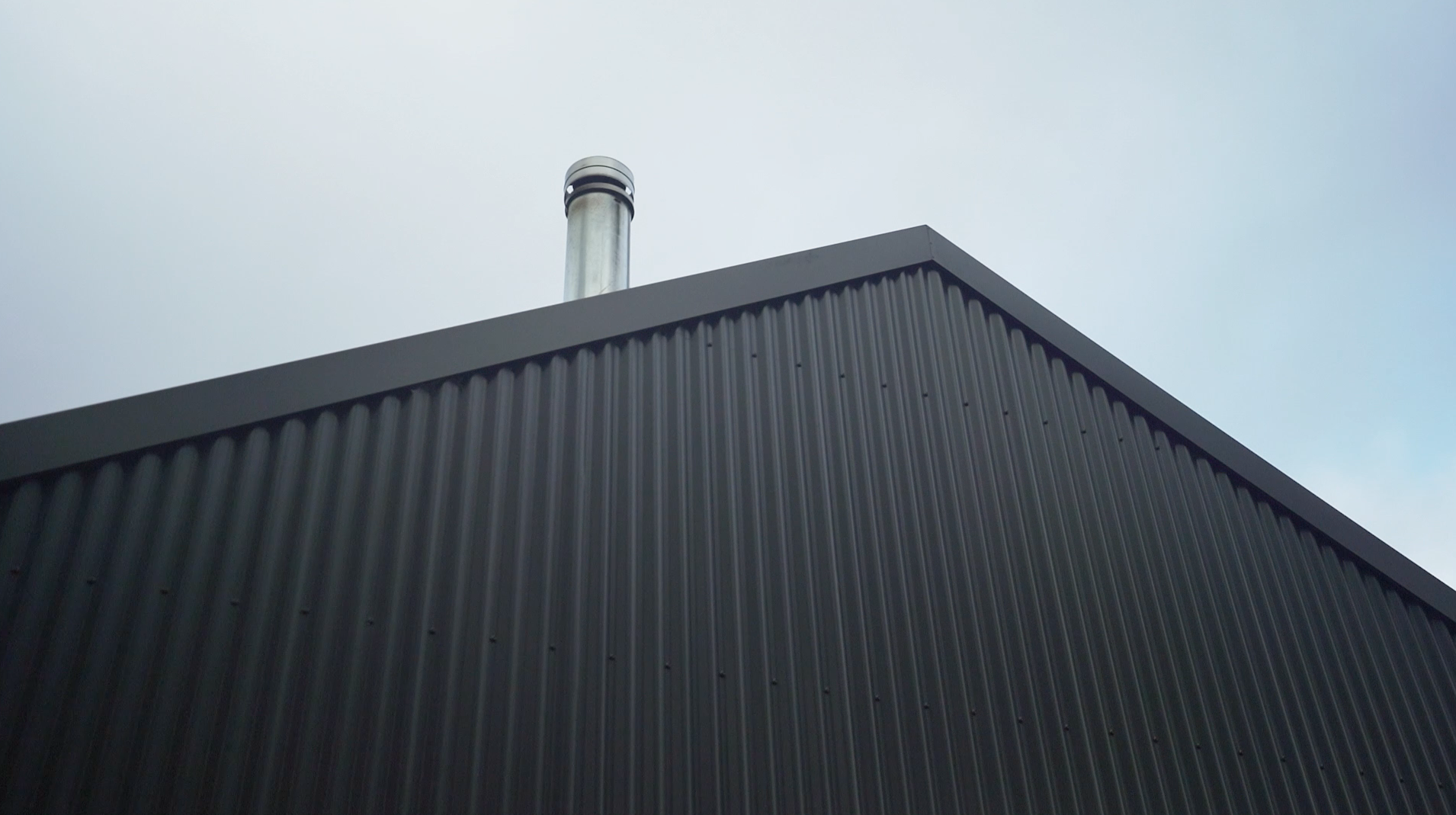Thoughts
Bushfire Considered Design
Bushfire Proof House Design
Words by Ingrid Donald
Film by Phillip Sage
Overview
Australia’s unique wilderness holds enormous attraction for visitors and residents alike. However, Australia is one of the most bushfire-prone countries in the world, and the stunning Blue Mountains are one of its most bushfire-prone regions.
Watch the film
Building and living in an area such as this requires in-depth understanding how to design homes that can be beautiful, functional, sustainable and also bushfire-resilient. It means knowing how the regulations apply to your land and home, what is needed to understand your local bushfire risk, what are the best materials and designs to use for your setting, and how to work with the landscape to reduce bushfire risk.
The first question homeowners need to ask is whether their land and home is at risk of bushfire. In New South Wales, the Rural Fire Service has a mapping tool to show whether you are in a bushfire-prone area.
The second question is to determine your level of risk. There are different degrees of bushfire risk, which are known as Bushfire Attack Levels, or BAL, which range from BAL 12.5 to BAL FZ (Flame Zone). Your home’s BAL is decided by the area you live, the vegetation that surrounds your house and land, the distance from that vegetation to your home, and the slope of the land that surrounds your home. From a design and materials perspective, there are some key changes that happen once a home reaches the level of BAL 40 or BAL FZ.
The BAL rating level measures the severity of a building’s potential exposure to ember attack, radiant heat and direct flame contact and will be the basis for all your construction requirements.
Our expertise in bushfire design covers all levels of bushfire exposure, and we have designed homes in all these settings.
The requirements for building to each BAL level are outlined in Australian Standard AS3959:2018 Construction of Buildings in Bushfire Prone Areas and should be read with Rural Fire Service document Planning for Bushfire Protection 2019.
Where to find these:
AS3959 available to purchase link
Planning for Bushfire Protection 2019 on RFS website link
Designing for bushfire-prone areas is about reducing the risk that burning embers and flames will ignite the home and by strengthening all the potential points of entry for flame or embers. That means design considerations such as avoiding corners where leaves can accumulate, reducing gaps to prevent embers from entering the walls or roof cavities, enclosing sub-floor areas, choosing fire-resistant materials and fittings for the house and surrounds, and ensuring the house has escape routes away from potential fire fronts.
It’s also about making use of the surrounding landscape in a way that enhances your interaction with it, while also reducing the risk that fire will impact your home. That means siting the house in a position that makes the most of the setting but ensuring the house has lower bushfire risk and safer exits.
Case Study
Split House
The house sits on 7 acres with in the Blue Mountains village of Blackheath. The house achieves a high Bushfire construction level of BAL 40 with the owners choosing to clear less vegetation whilst maintaining a close connection to the landscape.
Site Design
Choosing where to put a building within a block of land can make a big difference to its level of bushfire exposure, but it also needs to consider other factors such as environmental constraints, landscape design and the asset protection zone your house will need.
Environmental constraints
Threatened ecological communities, environmental offset schemes, and any other state and local government restrictions might impact the ability to clear the land to achieve an appropriate asset protection zone around your home
Slope
The intensity of the fire can double for each 10 degrees of slope, so keeping away from steep hillsides and avoiding building on ridge tops can help to reduce bushfire exposure.
Site access
Always consider how you might leave your home and how firefighters can access your home in the event of the fire. Access needs to be clear, direct and unobstructed, access to water supply should be within 4m of the driveway and to allow 70m for a hose to reach any [BR1] point of the house.
Landscaping
Landscaping can be used to slow the speed of a bushfire. Some plants and trees can act as wind breaks and heat barriers; feature such as dams, swimming pools, and rock outcrops, can also be used to slow down an approaching fire.
There are also landscaping principles to help reduce the risk of a home being affected by fire; for example, keeping vegetation away from the house, reducing the density of plants around the house, and choosing less flammable species.
Asset Protection Zone (APZ)
The Asset Protection Zone is the fuel reduced area around a building or structure. As an area of lower fuel load, it acts as a buffer between nearby bushfire hazard – such as dense bushland – and your home. It also provides a space that can be used to defend the home. The size of the APZ depends on the type of vegetation around the house, the distance to the bushfire hazard, and the slope of the land.
Building Design
When building in a bushfire prone area, there are a number of design principles that can be used to increase a building’s bushfire resilience.
Roof
Simple roof lines with enclosed eaves and easy-to-clean gutters reduce the chance of leaves and twigs building up, which can then ignite from embers. The choice of roof material is important, as metal roofs have fewer gaps than tiled roofs, which can let embers into the roof cavity. Features such as skylights should be bushfire-rated, but sometimes these pose too great a risk, such as in BAL Flame Zone homes.
Subfloor
The subfloor of a house can be vulnerable to embers if it’s left open. Subfloors should ideally be enclosed. If the subfloor if open the subfloor framing up to BAL 29 can be made using fire-resistant timbers such as Blackbutt, Spotted Gum, Merbau, Turpentine, Red Ironbark, Red River Gum or Silver Top Ash. For houses at BAL40 or BAL Flame Zone, the subfloor framing materials must be non-combustible.
Walls
Wall claddings are the skin of the house, and part of their function in bushfire is to stop fire from getting into the wall cavity. Up to BAL 29, fire-resistant timber can be used, and for BAL40 the wall cladding needs to be non-combustible materials such as metal or fibre-cement sheet. BAL FZ homes can use non-combustible materials however they must be fire-rated behind the cladding. BAL FZ homes can also use concrete, masonry or earth walls provided they are at least 90mm thick.
Verandahs and Decks
Verandahs and decks are a great way to experience the landscape around your home, even in bushfire-exposed areas. Up to BAL 29, these can be made using fire-resistant timbers, and at BAL 40 and BAL FZ they must be made from non-combustible tested materials.
Windows and doors
For houses rated at BAL29 or below, window and door frames can be made using more fire-resistant timbers, metal or metal-reinforced UPVC. At BAL 40, metal frames are the best option, but there are some timber and UPVC frames that are tested for this level of BAL.
At BAL FZ, windows either need to be tested to BAL FZ, but another option is to install tested and approved shutters for added protection.
Joints
Embers can sneak into the smallest cracks and gaps and ignite the wall or roof cavities, so screening or blocking those gaps is one of the most important steps to take. All gaps larger than two millimetres must be screened with metal mesh.
Gas and Water
Water and gas should have metal piping when above ground. Gas bottles should be stored safely away from the home and water tanks should be metal or concrete and have provision for static water supply as required by council.
You can install sprinkler systems that turn on automatically to help stave off a looming fire.
Prepare for the worst and assume that your home will lose electricity and water pressure. You’ll need a portable generator for use during a bushfire event.
Conclusion









